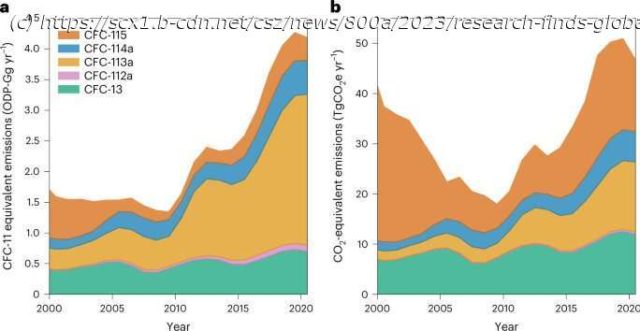New analysis has found increasing emissions of several ozone-depleting chemicals despite their production being banned for most uses under the Montreal Protocol—and a loophole in the rules is likely responsible.
New analysis has found increasing emissions of several ozone-depleting chemicals despite their production being banned for most uses under the Montreal Protocol—and a loophole in the rules is likely responsible.
The research, published today in Nature Geoscience and led by the University of Bristol and National Oceanic and Atmospheric Administration (NOAA), puts the rise in part down to the chemicals, known as chlorofluorocarbons or CFCs, being used to make other ozone-friendly alternatives to CFCs. This is an exception allowed under the Montreal Protocol, but contrary to its wider goals.
Lead author Dr. Luke Western, a Research Fellow at the University of Bristol and researcher at the NOAA’s Global Monitoring Laboratory (GML), said, “We’re paying attention to these emissions now because of the success of the Montreal Protocol. CFC emissions from more widespread uses that are now banned have dropped to such low levels that emissions of CFCs from previously minor sources are more on our radar and under scrutiny.”
According to the researchers, emissions from these CFCs currently do not significantly threaten ozone recovery. But because they’re potent greenhouse gases, they still affect the climate.
“Combined, their emissions are equal to the CO2 emissions in 2020 for a smaller developed country like Switzerland, said Western.






